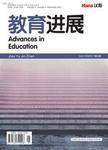版权所有:内蒙古大学图书馆 技术提供:维普资讯• 智图
内蒙古自治区呼和浩特市赛罕区大学西街235号 邮编: 010021

作者机构:扬州大学生物科学与技术学院江苏 扬州
出 版 物:《教育进展》 (Advances in Education)
年 卷 期:2025年第15卷第1期
页 面:722-729页
摘 要:新课改以来,各版本的新教材致力于学生核心素养的培养,通过对人教版和苏教版《分子与细胞》专题“细胞的能量供应和利用的课后习题在题量题型、素养指向方面进行对比分析,结果显示人教版课后习题数量和类型上更多样化,更侧重生命观念、科学思维素养的考察,苏教版习题更为精简开放,四个维度考察更为均衡。总结两个版本教材都具有题型多样化、注重情境创设、素养指向全面等习题特征,并提出在教学中应用课后习题应遵循的建议:1) 分析学情,因生制宜;2) 目标指向,筛选习题;3) 课上课下,双线进行。Since the new curriculum reform, the new textbooks of each version are committed to the cultivation of core literacy through the comparative analysis of the after-school exercises on the topic “Energy Supply and Utilization of Cells in the People’s Education Press and Suzhou Education Press of “Molecules and Cells in terms of question volume and literacy orientation. The results show that the number and type of after-school exercises of the People’s Education Press are more diverse;they put more emphasis on examining the concept of life and scientific thinking. The exercises of Suzhou Education are more concise and open, and the four-dimensional investigation is more balanced. This paper summarizes that two versions of the textbook have the characteristics of exercises such as diversified question types, emphasis on situation creation, and comprehensive literacy. The application of after-class exercises in teaching should follow the suggestions of 1) analyzing the learning situation, adapting measures to the conditions of students, 2) selecting exercises, and 3) conducting exercises in and out of class.